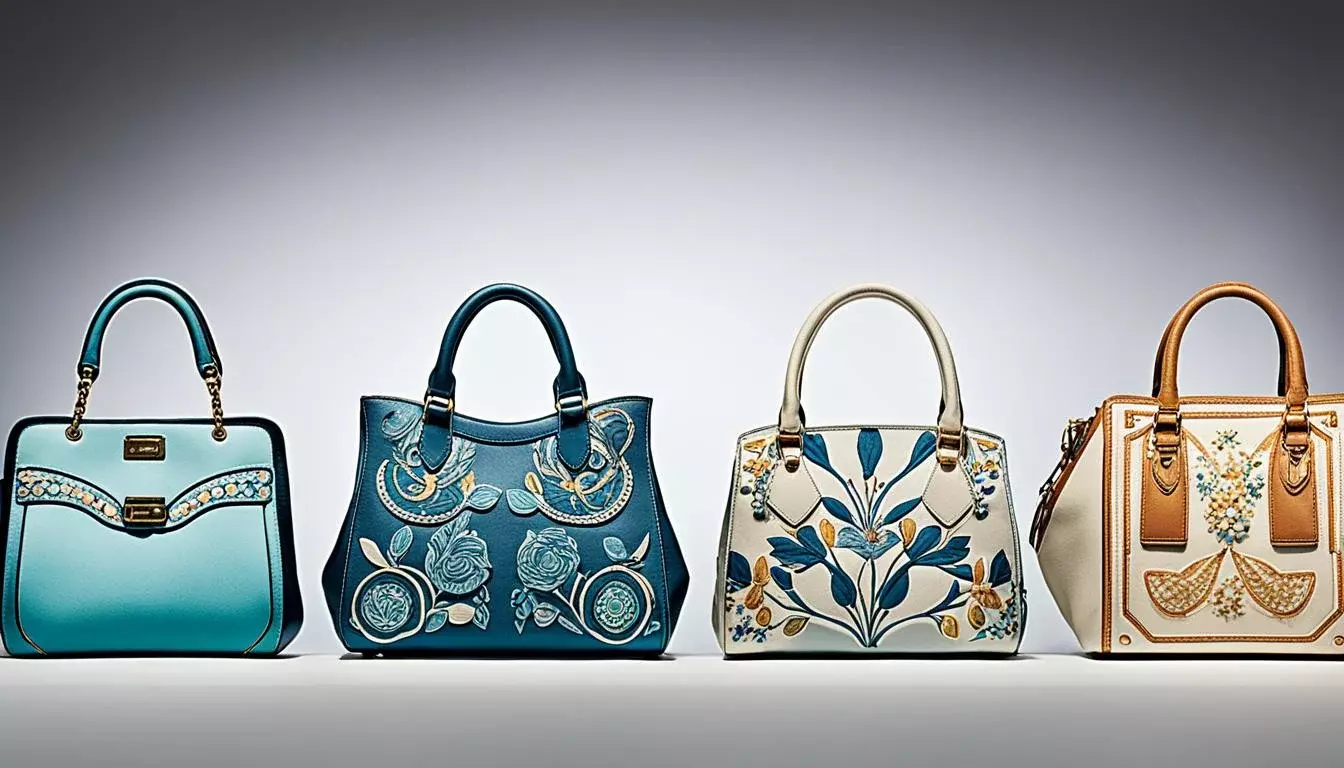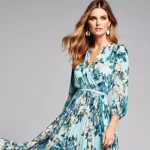Welcome to an exciting journey through the fascinating world of handbag fashion! In this comprehensive article, we will take you on a tour of the handbag history timeline, delve into the evolution of handbags, and explore the trends that have significantly influenced women’s fashion over the years.
Handbags have always been more than just accessories; they have been statements of style and status, reflecting the changing times and societal shifts. From their humble origins to the luxurious creations of today, handbags have played a vital role in the fashion industry.
Our exploration begins by charting the birth of handbag history, where we will uncover the earliest origins and examine the factors that led to their development. We will then journey through different eras, from the practicality of Victorian-era handbags and turning points in bag-wearing methods to the transformative styles of the 1920s and the post-war era of luxury and innovation.
As we navigate through the 20th century and beyond, we will witness the rise of iconic brands, the cultural revolution of the 1960s, and the diverse and captivating handbag styles that emerged in the 1970s and 1980s. We’ll then delve into the bag designs of the 1990s, explore the new millennium’s unique trends, and witness the current resurgence of vintage handbags.
Throughout this captivating journey, we’ll explore critical milestones, influential designers, and societal shifts shaping handbag fashion. We’ll also touch on the role of social media and the rise of gender-neutral designs and explore the latest fashion trends and the influence of sustainability in handbag production.
Join us as we celebrate the rich history of handbags! Let’s dive into the evolution of handbag design, explore historical styles, and uncover the trends that continue to shape the world of women’s fashion today.
The Birth of Handbag History
To understand the evolution of handbags, we must explore their humble beginnings. The birth of handbag history can be traced back to ancient civilizations, where people used pouches, baskets, and sacks to carry their belongings. These early bags served a purely functional purpose, providing a convenient way to transport essential items.
In ancient Egypt, both men and women carried bags known as “chatelaines,” which were attached to belts and adorned with decorative elements. These chatelaines were often crafted from woven plant fibers or animal skins, showcasing the early integration of design and practicality in handbag creation.
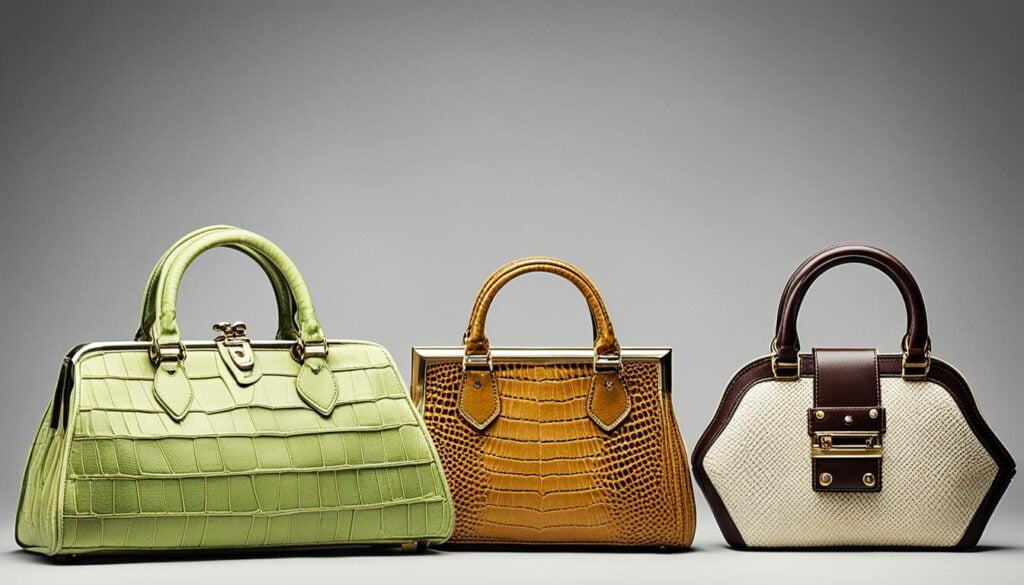
As civilizations advanced, so did the design and construction of bags. In ancient Greece, women carried small bags called “kibisis,” while men used larger versions called “peplos.” These bags featured intricate designs and were typically made of luxurious materials such as leather and silk.
The birth of handbag history gained momentum during the Middle Ages when bags evolved to cater to the needs of knights and nobles. During this time, men and women carried bags known as “pokes” or “scrips,” worn on belts or carried by hand. These bags were often elaborately decorated and boasted intricate craftsmanship.
Handbag history continued to evolve through the Renaissance when bags called “pockets” rose in popularity. These pockets were separate garments worn under skirts, providing a discreet way to carry essentials. Pockets became a symbol of social status, with elaborate embroidery and embellishments adorning these fashionable accessories.
“The birth of handbag history can be traced back to ancient civilizations, where people used pouches, baskets, and sacks to carry their belongings.”
The birth of handbag history marks the foundation of an accessory that would span centuries and undergo countless transformations. Join us as we delve deeper into the handbag timeline, exploring how these practical objects evolved into the fashion-forward statement pieces we know today.
Charting the Early Evolution of the Handbag
The world of handbags witnessed remarkable changes during the early evolution of the accessory. In this section, we will explore the handbag trends and styles that emerged during two historical periods: the Victorian Era and the emergence of bags worn inside ladies’ skirts.
The Victorian Era: Practicality Over Fashion
From 1837 to 1901, the Victorian Era brought about significant changes in fashion and societal norms. Handbags during this time prioritized practicality over fashion, reflecting the conservative values of the era. Women carried small, discreet bags called reticules, typically made of fabric and adorned with intricate embroidery or beadwork. These reticules held essential items such as handkerchiefs, coins, and small personal belongings.
Historical handbag development during the Victorian Era can be traced back to the popularity of reticules. These small, purse-like bags were typically made of fabric and adorned with intricate embroidery or beadwork. Reticules were not only practical but also served as an opportunity for women to showcase their creativity and artistic talent. Often carried by women of all social classes, these small bags were designed to hold essential items such as handkerchiefs, coins, and small personal belongings.
As the Victorian Era progressed, handbag fashion evolved, reflecting the changing times. The timeline of handbag trends during this period showcased the influence of industrialization and the rise of the middle class. Simple and functional leather satchels gained popularity, giving women more space to carry their belongings. The introduction of metal clasps and closures added a touch of elegance and convenience, allowing women to access their essentials easily.
However, despite the practical nature of handbags in the Victorian Era, fashion and social expectations still played a significant role. The sizes and styles of handbags varied depending on the occasion and a woman’s social status. Wealthier women often carried ornate, intricately designed bags of luxurious materials, while working-class women used more modest and durable options.
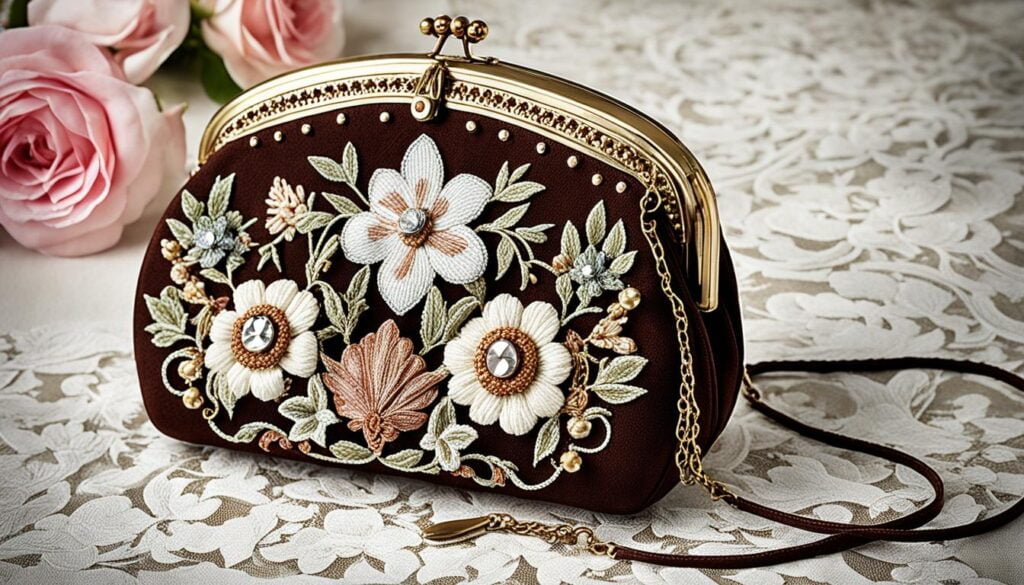
Turning Points: Bags Worn Inside Ladies’ Skirts
Another exciting aspect of the early handbag evolution was the introduction of bags worn inside ladies’ skirts. Around the mid-19th century, women began wearing bags known as chatelaines, which were attached to their corset belts or waistbands. These chatelaines allowed women to carry small essentials such as keys, watches, or sewing accessories conveniently without needing an external handbag. The chatelaines were often intricately designed with decorative elements, reflecting the Victorian fascination with elaborate accessories.
The handbag origins timeline shows that women carried small bags called chatelaines during the Victorian era. These chatelaines were essentially pockets that were worn inside their skirts. They were attached to a waistband or belt and allowed women to carry their personal belongings safely and conveniently without needing an external handbag. The chatelaines were often intricately designed with decorative elements, reflecting the Victorian fascination with elaborate accessories.
As time passed, fashion trends evolved, and the concept of carrying a bag inside the skirt faded away. Women started carrying handbags on the outside, showcasing their elegance and style. Handbag trends evolved by practicality and fashion preferences, with different styles emerging to suit various occasions and outfits. Handbags became an essential accessory for women in the 20th century, from dainty evening purses to roomy tote bags.
Today, handbags are functional items that reflect personal style and status. They come in various shapes, sizes, and materials to cater to different tastes and needs. While the trend of wearing bags inside skirts may have vanished, it serves as a reminder of how fashion evolves and adapts to changing times. So, the next time you reach for your purse, take a moment to appreciate the handbag fashion history that led us to our vast array of stylish choices.
| Handbag Style | Description |
|---|---|
| Reticules | Women discreetly carried small fabric bags adorned with embroidery or beadwork during the Victorian Era. |
| Chatelaines | Bags were worn inside ladies’ skirts, attached to corset belts or waistbands, and allowed women to carry small essentials. |
Handbag Origins Timeline: The 20th Century and Beyond
As we enter the 20th century, the handbag continues to evolve, taking on new shapes, materials, and styles to meet women’s changing needs and desires. During this period, we witnessed significant breakthroughs in fashion and culture, directly influencing handbag design and popularity.
Image:
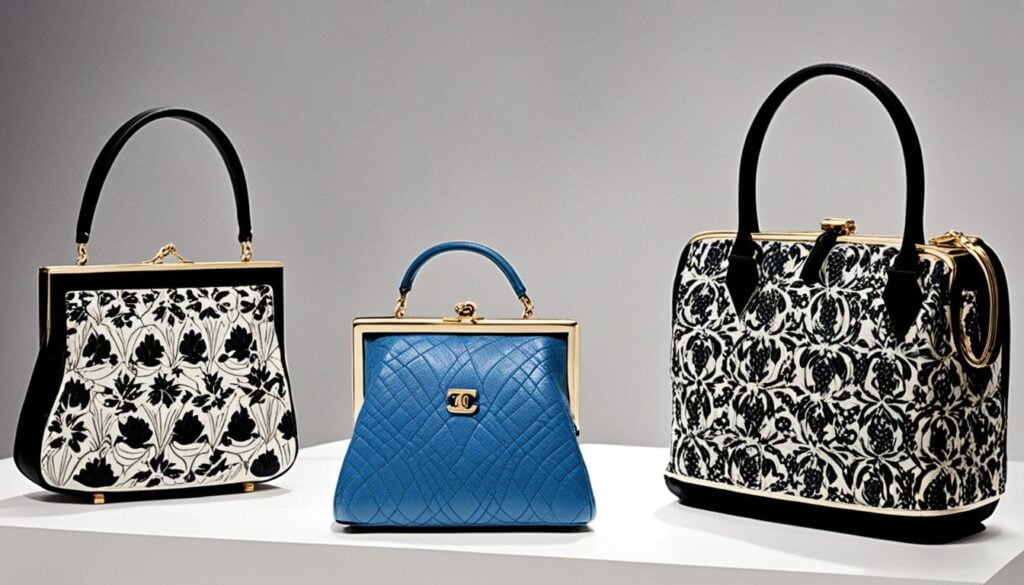
One key factor contributing to the transformation of handbags is the rise of women’s liberation movements, which led to greater independence and an increased need for functional accessories. This shift in societal dynamics paves the way for the emergence of handbags that are not just fashionable but also practical.
Handbag styles varied greatly during the early 20th century, reflecting the diverse fashion trends of the time. From the structured and ladylike designs of the 1920s Art Deco era to the sleek and streamlined silhouettes of the 1930s, handbags became an integral part of women’s ensembles.
As we move further into the century, the fashion industry witnesses the influence of major cultural milestones on handbag design. The post-war era brought luxury and innovation, with iconic brands introducing new materials, shapes, and features. The 1960s cultural revolution embraced unconventional styles, while the 1970s and 1980s showcased a wide range of diverse handbag designs.
To further highlight the evolution of handbags, let’s take a closer look at how key decades of the 20th century have influenced handbag design and trends:
| Decade | Key Features |
|---|---|
| 1920s | Art Deco influence, freedom of expression, beaded designs |
| 1930s | Rise of the shoulder bag, streamlined and structured shapes |
| 1940s | World War II influence, functionality over fashion, military-inspired designs |
| 1950s | Return to femininity, elegant and ladylike designs |
| 1960s | Cultural revolution, unconventional and bold styles, psychedelic prints |
The Transformative 1920s: Art Deco and Freedom
The 1920s were a pivotal decade in the history of handbags, marked by the emergence of Art Deco design and a newfound sense of freedom and expression in women’s fashion. This period often called the Roaring Twenties, saw a break from the strict societal norms of the past as women embraced liberation, independence, and bold fashion choices.
Art Deco, an influential artistic style that originated in France, heavily influenced handbag design during this era. Inspired by geometric shapes, streamlined forms, and lavish embellishments, Art Deco handbags became iconic symbols of the modern woman. These bags featured bold patterns, intricate beading, and luxurious materials, showcasing the sophistication and luxury that defined the Jazz Age.
One notable trend that emerged during the 1920s was the popularity of clutch bags. These compact and sleek handbags were designed to be carried in hand, reflecting women’s newfound sense of freedom and independence during this time. Clutch bags perfectly complemented the fashionable flapper dresses of the era, allowing women to accessorize while on the go easily.
The 1920s also witnessed the rise of notable handbag designers, such as Hermes and Chanel, who became synonymous with luxury and innovation. Coco Chanel, in particular, revolutionized the fashion industry by introducing practical yet stylish handbags, such as the iconic Chanel 2.55, which featured a shoulder strap for added convenience.
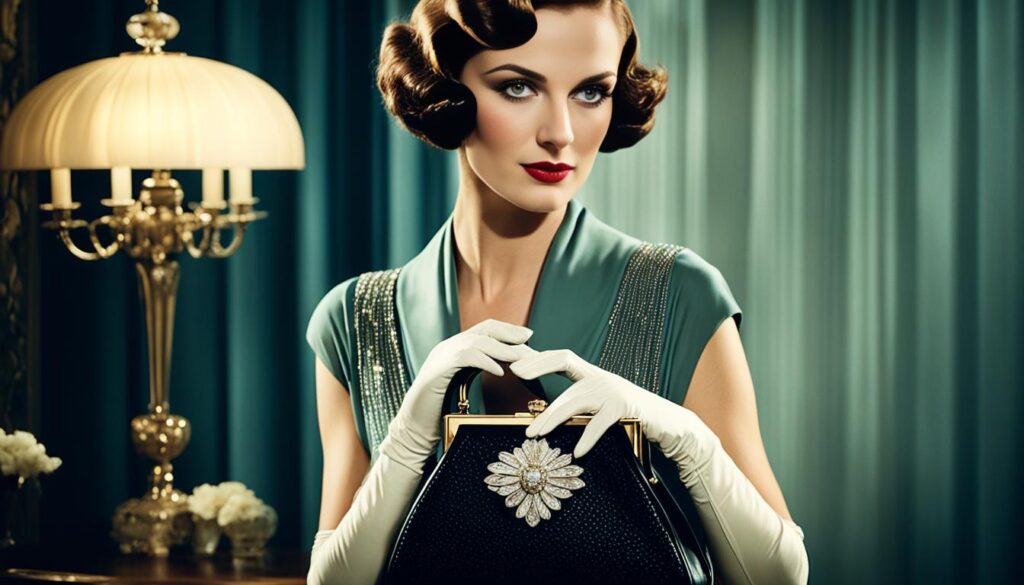
The transformative 1920s were a significant turning point in handbag history, as the influence of Art Deco design and the spirit of freedom shaped the future of handbag fashion. Today, the Art Deco style continues to inspire designers and remains a timeless aesthetic in the world of handbags.
Handbag History Timeline: Milestones Through Decades
As we continue our exploration of the handbag history timeline, we now delve into two significant periods that have left a lasting impact on handbag design and fashion. The 1930s witnessed the rise of the shoulder bag, while World War II ushered in a shift from functionality to fashion.
1930s: The Rise of the Shoulder Bag
In the 1930s, handbag design took a bold leap forward with the introduction of the shoulder bag. This innovative style allowed women to carry their belongings conveniently and comfortably, as a strap suspended the bag from the shoulder. The shoulder bag quickly gained popularity, reflecting the changing lifestyles and fashion preferences of the time.
Shoulder bags evolved from simple, structured designs to elaborate, embellished versions. Luxurious leather and satin were often used, adorned with decorative elements such as beads, sequins, and embroidery. These fashionable accessories became symbols of sophistication and femininity and were embraced by women across different social classes.
The shoulder bag’s practicality and versatility made it a must-have accessory, complementing various outfits and occasions. Its success marked a significant milestone in handbag design, forging a new path for future innovations.
From Functionality to Fashion: World War II Influence
World War II brought about a drastic shift in handbag design, reflecting the changing needs and societal dynamics of the time. As women took on new roles in the workforce and supported the war effort, their handbags needed to align with their evolving lifestyles.
Functionality became a primary focus, as handbags had to accommodate essentials like ration books, identification cards, and small personal items. Utility bags and pouches with multiple compartments and secure closures became popular choices. These practical designs allowed women to carry their belongings safely while maintaining efficiency and ease of use.
Despite emphasizing functionality, designers found ways to infuse fashion into wartime handbags. They incorporated stylish elements such as contrasting materials, unique closures, and color accents to add a touch of glamour amidst the challenging times. Pioneering brands like Hermès and Gucci continued to innovate, showcasing the resilience and adaptability of the fashion industry.
Handbags during World War II symbolized the strength and determination of women, showcasing their ability to balance practicality and fashion even in the face of adversity. This transformative period laid the foundation for future handbag designs and paved the way for the industry’s continued evolution.
Continue to join us as we explore the post-war era in Section 7, where luxury and innovation take center stage in handbag history.
The Post-War Era: Luxury and Innovation
After the hardships of World War II, the fashion industry revitalized as a sense of luxury and glamour returned to the forefront. The post-war era marked a significant shift in handbag design, focusing on elegance, luxury, and innovation.
The “New Look” and Embracing Elegance
One of the defining moments of this period was the introduction of Christian Dior’s iconic “New Look” in 1947. This revolutionary collection featured cinched waists, full skirts, and an emphasis on feminine curves. To complement this new silhouette, handbags became more structured and often featured luxurious materials such as leather and exotic skins.
The “New Look” aesthetic called for elegance and sophistication, and handbags became a crucial accessory to complete the polished ensemble. Designs incorporated intricate details such as gold hardware, ornate clasps, and elegant handles, showcasing the craftsmanship and attention to detail that defined this era.
Handbags as a Symbol of New Beginnings
In addition to their aesthetic appeal, handbags also symbolized a sense of new beginnings during the post-war era. As the world emerged from the darkness of the war, handbags became a symbol of hope and optimism. Women cherished these accessories as a way to express their individuality and freedom.
Designers embraced this sentiment by experimenting with new shapes and sizes. Oversized totes and top-handle bags became popular, offering practicality and versatility while exuding luxury. The post-war era marked a turning point in handbag design, setting the stage for the innovative and diverse styles that would evolve in the years to come.
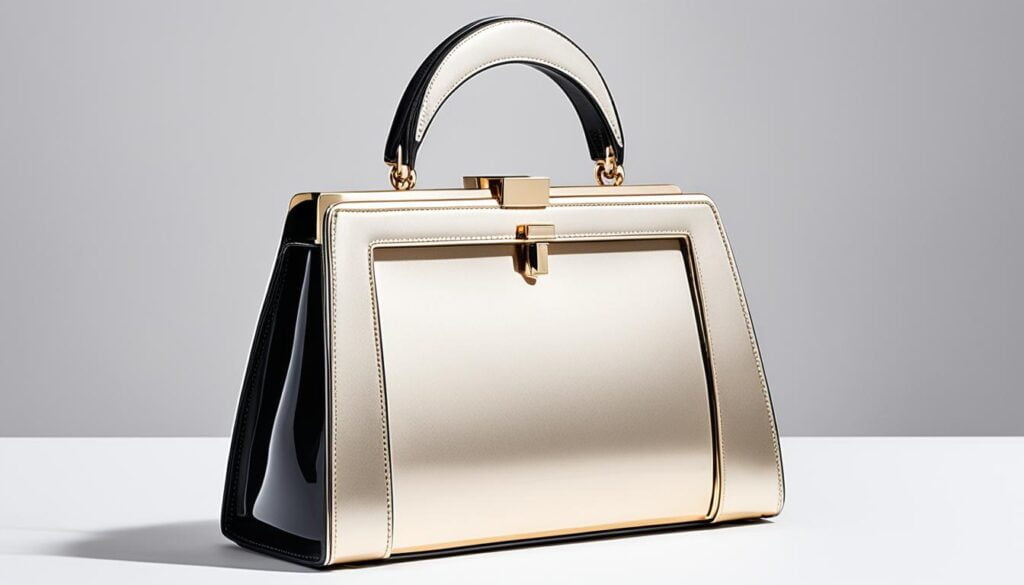
As the fashion industry soared to new heights during the post-war era, handbags played a pivotal role in defining the luxury and innovation of the time. The “New Look” and its emphasis on elegance revolutionized handbag design, while handbags became symbols of hope and new beginnings. Join us as we continue our journey through the history of handbags, exploring the evolving styles and trends that have shaped the industry.
Historical Handbag Development: The 1960s Cultural Revolution
The 1960s marked a period of significant cultural transformation, and this cultural revolution profoundly impacted the development of handbags. As societal norms and conventions were challenged, fashion designers and consumers began embracing bold and unconventional styles. The handbag industry responded to this new wave of creativity, bringing forth innovative designs that reflected the changing times.
During the 1960s, handbags became more than just functional accessories; they became symbols of self-expression and rebellion. This decade has witnessed the rise of iconic bag styles that are revered today. From the sleek and structured designs of the mod movement to the vibrant and psychedelic patterns of the hippie era, handbags became a canvas for artistic expression.
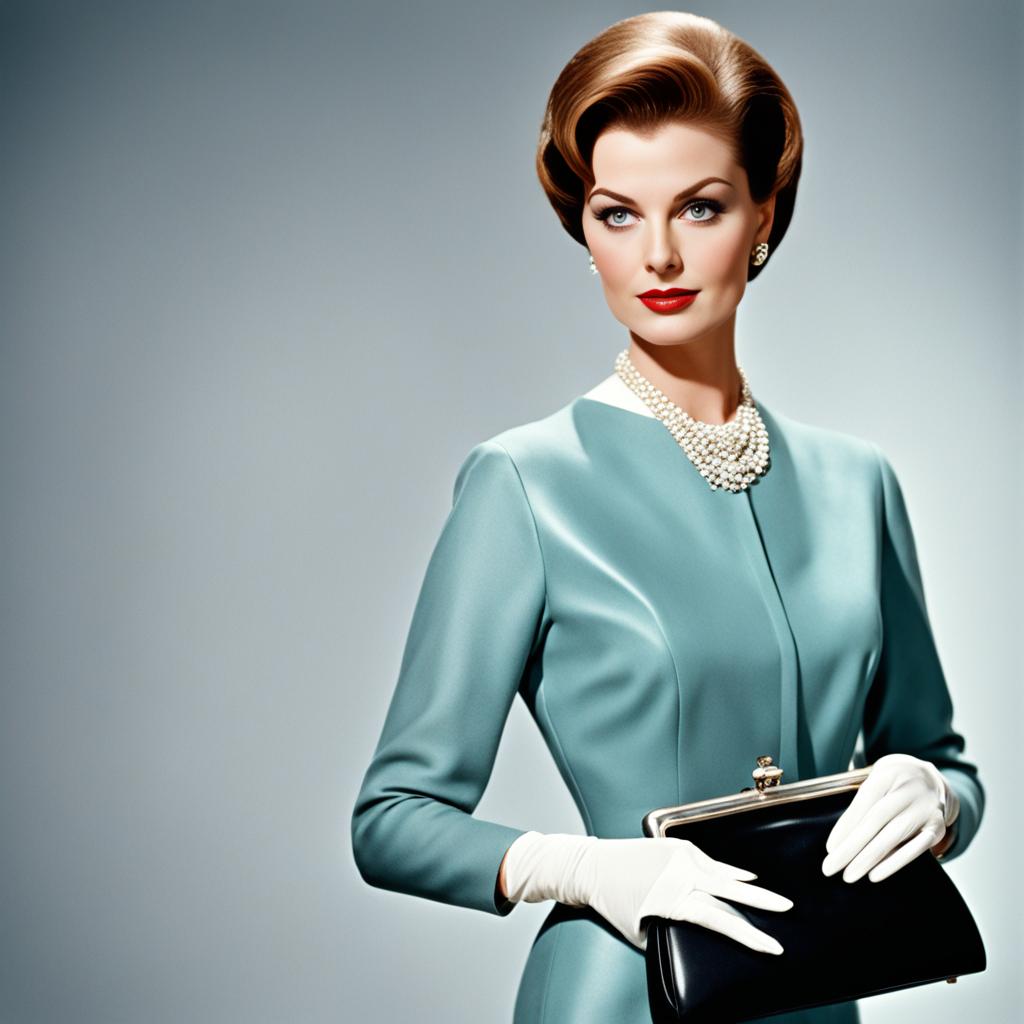
“The 1960s brought about a cultural revolution that influenced every aspect of society, including fashion. Handbags of this decade reflected the spirit of change and experimentation, capturing the essence of the times.”
The mod movement of the 1960s gave birth to the iconic miniskirt and shift dress, and handbag designers followed suit by creating compact, geometric-shaped bags that complemented the era’s fashion trends. These sleek and structured handbags, often made from patent leather or PVC, epitomized the forward-thinking and futuristic spirit of the mod movement.
As the decade progressed, the hippie counterculture movement emerged, rebelling against society’s established norms. Handbags took on a new form, featuring vibrant colors, intricate beadwork, and bold patterns inspired by psychedelic art. Bohemian-inspired tote bags and shoulder bags became popular choices, aligning with the movement’s free-spirited and experimental nature.
The 1960s witnessed the rise of new handbag styles and established luxury brands embracing the changing times. Designers like Gucci and Louis Vuitton incorporated innovative materials and unconventional designs into their collections, solidifying their position as trendsetters in the fashion industry.
The cultural revolution of the 1960s had a lasting impact on handbag development, paving the way for the creativity and diversity we see in handbag designs today.
Handbag Styles Timeline: Diversity in the 1970s and 1980s
The 1970s and 1980s were transformative decades for handbag fashion, characterized by a diverse range of styles that reflected the cultural and social changes of the time—from disco-inspired designs to bold colors and innovative materials; this period witnessed an explosion of creativity in the handbag industry.
Handbags on the Silver Screen: Celebrities as Trendsetters
Celebrities played a significant role in shaping handbag trends during the 1970s and 1980s. As iconic figures in popular culture, their fashion choices directly influenced the styles that became popular among consumers. Films like Saturday Night Fever and Flashdance showcased glamorous handbags that captured the spirit of the disco era. Celebrities like Diana Ross and Jane Fonda often carried statement purses that became highly sought after.
Furthermore, iconic characters from famous TV shows and movies, such as Alexis Carrington from Dynasty and Princess Diana, became style icons whose handbag choices were emulated by fans worldwide. These celebrity endorsements propelled certain brands and designs into the spotlight, cementing their status as must-have accessories.
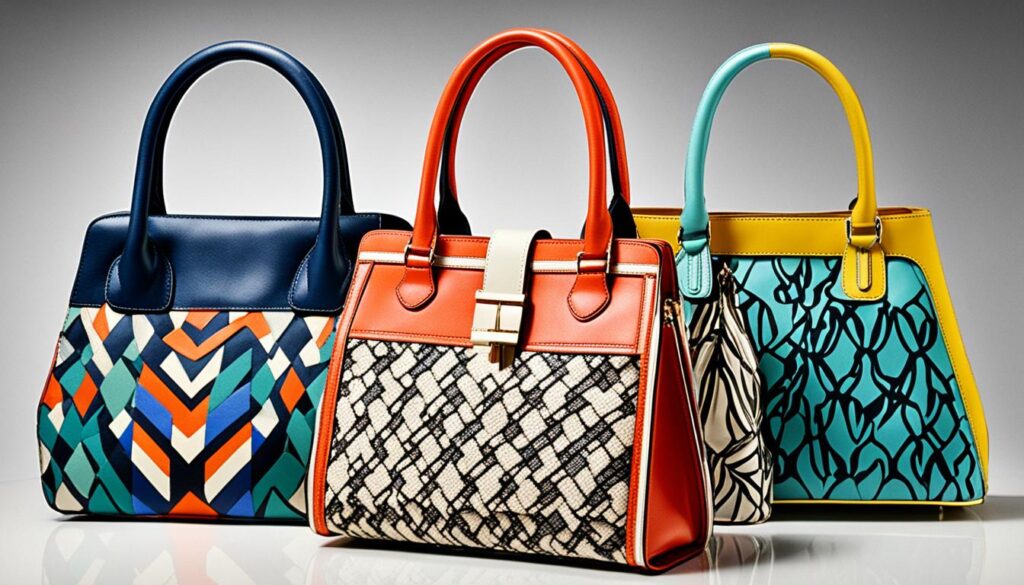
The Emergence of Iconic Brands
The 1970s and 1980s witnessed the rise of several iconic handbag brands that have become synonymous with luxury and timeless style. Brands like Gucci, Louis Vuitton, and Chanel solidified their place in the fashion industry by introducing iconic handbag designs that have stood the test of time.
The Gucci “GG” logo and the Louis Vuitton monogram became globally recognized symbols of luxury and sophistication. At the same time, the Chanel quilted bag and its signature chain strap revolutionized the concept of elegance in handbags. These brands focused on creating high-quality, meticulously crafted pieces that exuded luxury and became status symbols for fashion-forward individuals.
| Brand | Iconic Handbag |
|---|---|
| Gucci | Gucci GG Marmont |
| Louis Vuitton | Louis Vuitton Speedy |
| Chanel | Chanel Classic Flap Bag |
These timeless designs introduced during the 1970s and 1980s continue to be highly coveted and are often passed down as cherished heirlooms from generation to generation.
Expansion and Variety: The Evolution of Bag Designs in the 90s
The 1990s marked a period of expansion and diversity in bag designs as fashion trends became more eclectic and individualistic. This era witnessed the rise of various styles and materials, reflecting consumers’ changing needs and preferences. From minimalist designs to bold and colorful creations, handbags in the 90s showcased multiple options for fashion enthusiasts.
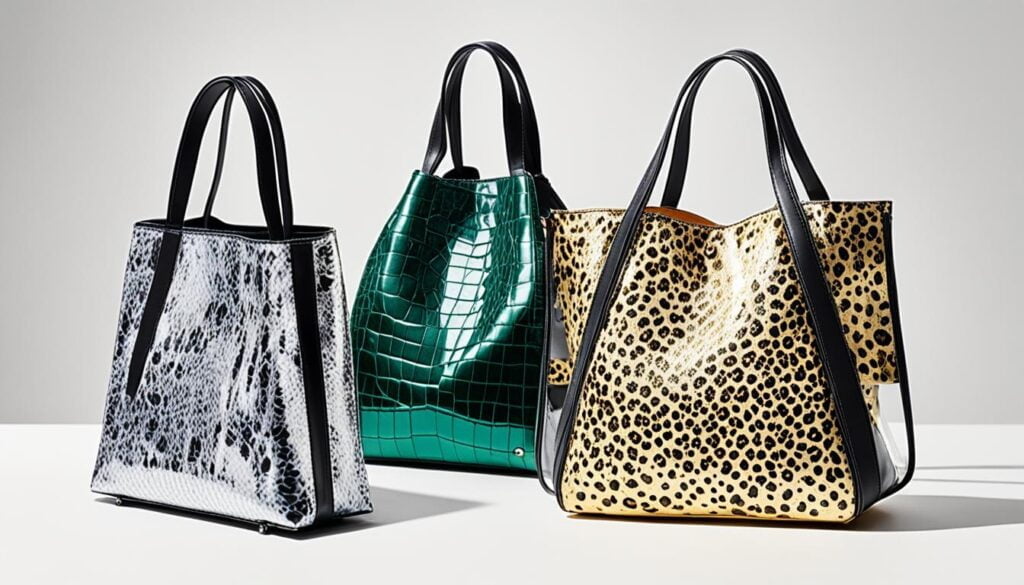
The 90s saw the emergence of iconic bag designs that continue to influence the industry today. One notable style that gained popularity during this time was the “It” bag. These highly coveted and often limited-edition bags became status symbols worn by celebrities and fashion influencers. Brands like Prada, Fendi, and Gucci produced iconic designs that dominated the fashion scene.
The 90s also witnessed a shift towards more functional and practical handbags. The rise of women in the workforce led to an increased demand for bags that could accommodate laptops, documents, and other essentials. Tote bags and messenger bags became popular choices for working women, offering both style and functionality.
In addition to the classic styles, the 90s also saw the emergence of unconventional and avant-garde bag designs. Designers experimented with unique shapes, unconventional materials, and bold colors, pushing the boundaries of traditional handbag design. These innovative creations catered to individuals seeking to make a bold fashion statement.
The 90s marked a turning point in the evolution of bag designs, emphasizing individual expression and personal style. Consumers had more options than ever before, allowing them to choose a bag that reflected their unique taste and personality. The diversity in bag designs during this era set the stage for future trends and paved the way for today’s fashion-forward styles.
Handbag Timeline: A New Millennium of Style
In the 21st century, handbags have continued to evolve, reflecting modern women’s changing needs and preferences. The new millennium brought about innovative designs, incorporating technology and pushing the boundaries of style. Simultaneously, minimalism and maximalism emerged as contrasting trends, offering women diverse options to express individuality.
Into the 2000s: Incorporating Technology in Design
The turn of the century introduced handbags that seamlessly integrated technology into their design. With the rise of smartphones and other gadgets, designers recognized the need for functional bags to accommodate these devices. Built-in charging ports, wire organizers, and RFID-blocking pockets became standard features, catering to the tech-savvy lifestyle of contemporary women.
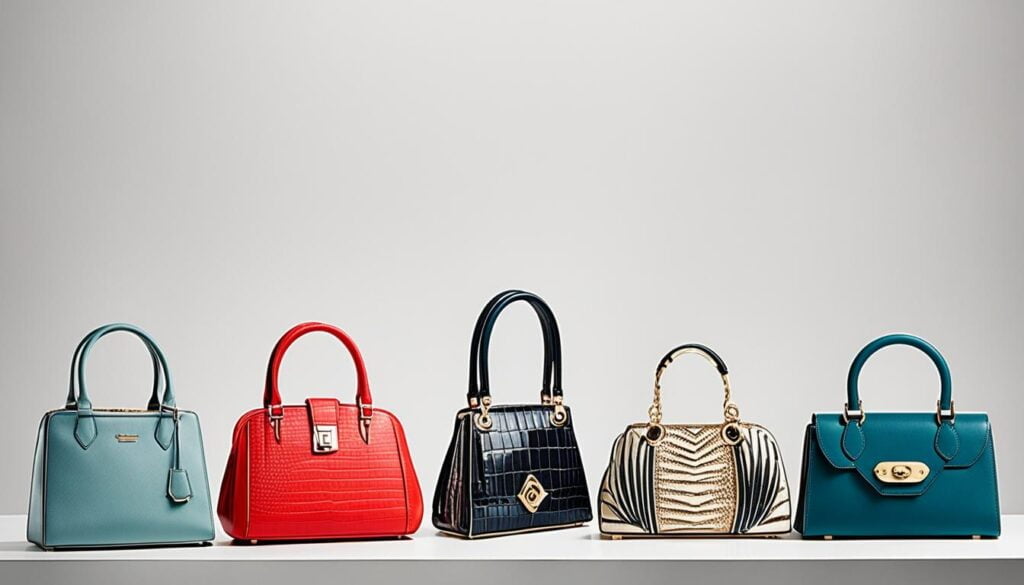
Minimalism and Maximalism: The Balancing Act
As the fashion industry embraced diversity, the 2000s witnessed a significant shift from the excess of the previous decades. Minimalist handbags gained popularity, characterized by clean lines, neutral colors, and simple silhouettes. These understated designs exuded elegance and sophistication, appealing to those seeking a more refined aesthetic.
On the other end of the spectrum, maximalist handbags made a bold statement. These eye-catching accessories featured vibrant colors, bold patterns, and intricate embellishments. From oversized totes to whimsical clutches, maximalist handbags allowed women to express their creativity and showcase their unique style.
Throughout the new millennium, handbags have become more than just functional accessories. They have become an expression of personal style, allowing women to make a statement and confidently carry their essentials.
Historical Handbag Styles: 2010s and the Quest for the Unique
The handbag industry continued to evolve in the 2010s, focusing on individuality and pursuing unique styles. In this section, we will explore the historical handbag styles of this decade and the trends that emerged during this period.
One notable trend of the 2010s was the rise of smaller, statement-making handbags. Women began opting for compact, eye-catching designs that could easily transition from day to night. These miniature bags, often adorned with bold embellishments and intricate detailing, became must-have accessories.
Furthermore, sustainable and eco-friendly handbags gained popularity during this time. With an increased focus on environmental consciousness, designers started incorporating recycled materials into their creations. Additionally, consumers sought brands prioritizing ethical production practices and fair trade.
Another significant development in handbag styles was the incorporation of tech-friendly features. As technology became integral to daily life, handbags were redesigned to accommodate smartphones and other gadgets. Anti-theft features, such as hidden compartments and RFID-blocking materials, became increasingly common.
The 2010s also marked the resurgence of vintage-inspired handbags. Designers drew inspiration from iconic past styles, adding modern twists to create unique and nostalgic designs. Retro shapes, like boxy satchels and structured top-handle bags, made a comeback, appealing to fashion enthusiasts looking to make a statement.
In summary, the 2010s witnessed a shift in handbag styles, focusing on individuality, sustainability, and nostalgia. This decade has showcased the quest for unique handbag styles that reflect personal tastes and values, from miniature statement bags to eco-friendly designs and vintage-inspired creations.
Handbag Trends Evolution: Tracking the Latest Fashion
In the ever-changing world of fashion, handbag trends continue to evolve and adapt to consumers’ shifting tastes. Keeping up with the latest fashion trends is essential for those wanting to stay in vogue.
Trending: Sustainability in Handbag Production
One of the significant trends in the handbag industry is the growing emphasis on sustainability. With the increasing awareness of environmental concerns, fashion brands are taking steps towards more eco-friendly practices in handbag production. This includes using sustainable materials, such as recycled fabrics, vegan leather alternatives, and natural dyes.
In addition to eco-conscious materials, sustainable handbag production involves ethical manufacturing processes and fair trade practices. Consumers are more inclined to purchase handbags that align with their values and contribute to a greener future.
Modern-Day Movements Shaping Handbag Choices
Beyond sustainability, the fashion world is also influenced by various modern-day movements that shape handbag choices. These movements reflect the social, cultural, and political climate and can significantly impact handbag designs and features.
For example, the rise of technology has led to the demand for handbags with built-in charging ports and compartments to accommodate smartphones and other devices. Similarly, remote work and travel have increased the popularity of functional and versatile handbags that can hold laptops, tablets, and other essentials.
Moreover, inclusivity and diversity have become critical considerations for many fashion brands. Handbags are now designed to cater to different body types, gender expressions, and cultural influences, offering consumers a more inclusive range of options.
As society continues to evolve, handbag trends will reflect consumers’ current values, needs, and aspirations.
Evolution of Handbag Design: The Role of Social Media
Influencers and the Boom of Handbag Marketing
Social media has revolutionized how we perceive and consume fashion; the handbag industry is no exception. In today’s digital era, influencers significantly shape handbag trends and drive consumer behavior. With their large followings and influential presence, these social media personalities have become the go-to source for fashion inspiration and recommendations.
With a single Instagram post or YouTube video, an influencer can instantly catapult a handbag into the spotlight and create a viral trend. These individuals can amplify brand awareness and generate massive demand, skyrocketing featured bag sales. As a result, brands are increasingly collaborating with influencers to showcase their latest handbag collections and tap into the influencer’s engaged audience.
Moreover, influencer marketing allows handbag brands to personally connect with their target demographic. By partnering with influencers who embody the brand’s image and values, companies can effectively reach their desired audience and build a loyal customer base. Influencers provide a relatable and aspirational platform for showcasing handbags, making them more accessible and desirable for consumers.
The rise of social media has created a symbiotic relationship between influencers and handbag brands, with both parties benefiting from this collaboration. Influencers have gained the power to influence consumer preferences and purchasing decisions, while brands have gained a direct line to their target market and increased exposure.
How Virtual Spaces Affect Physical Fashion Trends
Social media not only impacts the marketing and promotion of handbags but also influences these accessories’ actual design and aesthetics. Online platforms serve as virtual spaces where people can express their style and showcase their unique handbag collections. This virtual world profoundly impacts physical fashion trends, shaping the design elements that resonate with consumers.
Fashion enthusiasts can discover and share their favorite handbag styles through platforms like Instagram, creating a community-driven dialogue around trends and aesthetics. This virtual fashion ecosystem acts as a breeding ground for new ideas and inspiration, encouraging brands to innovate and adapt to the evolving preferences of their target audience.
Moreover, social media has given rise to niche communities and subcultures that strongly influence handbag design. These communities have unique aesthetic codes and values, which can diverge significantly from mainstream fashion trends. Handbag brands are increasingly attuned to these virtual communities and actively seek inspiration, leading to specialized designs and limited-edition collaborations catering to specific subcultures.
In conclusion, social media has become an integral part of the handbag industry, influencing not only marketing strategies but also the design and evolution of handbag styles. By leveraging the power of influencers and virtual spaces, handbag brands can stay relevant, connect with their target audience, and navigate the dynamic fashion landscape in the digital age.
Handbag Fashion History: The Rise of Gender-Neutral Designs
In recent years, the fashion industry has witnessed a significant shift towards gender-neutral designs, and handbags are no exception. The traditional notion of handbags exclusively designed for women is evolving as more designers embrace inclusivity and cater to a broader range of preferences and identities. This shift reflects the changing societal attitudes towards gender and fashion, where individuals seek accessories that defy traditional gender norms.
Gender-neutral handbags offer a versatile and modern approach to accessorizing, blurring the lines between masculinity and femininity. These designs prioritize functionality, minimalism, and clean lines, allowing people of all genders to express their style without conforming to traditional gender expectations.
With gender-neutral handbags, individuals are no longer limited to specific styles or colors. They can choose from various shapes, sizes, and materials that suit their preferences and needs. Whether it’s a sleek backpack, a minimalist tote, or a practical crossbody bag, these designs empower individuals to express their authentic selves.
As the demand for gender-neutral accessories grows, designers and brands respond with innovative and inclusive collections. They are reimagining classic handbag silhouettes, incorporating unisex details, and highlighting the versatility of their designs. By challenging traditional gender norms, these handbags encourage self-expression and create a more inclusive fashion landscape.
| Benefits of Gender-Neutral Handbags | Examples of Gender-Neutral Designs |
|---|---|
|
|
Gender-neutral handbags not only redefine the concept of handbag fashion but also contribute to a more inclusive and diverse society. They enable individuals to embrace their unique style while breaking free from societal expectations. As the fashion industry continues to embrace gender inclusivity, we can expect to see even more exciting and diverse options in handbag design.
Handbag History Timeline: Celebrating Vintage Resurgence
The allure of historical and vintage handbags continues to captivate fashion enthusiasts. These iconic pieces embody a sense of timeless elegance and sophistication. Vintage handbags tell a tale of style and craftsmanship from bygone eras and serve as unique fashion statements that stand out in a sea of modern designs.
Exploring the historical significance and cultural relevance of these vintage treasures allows us to appreciate their journey through time and understand their impact on handbag fashion’s evolution. From the delicate beaded bags of the Roaring Twenties to the glamorous box clutches of the Hollywood Golden Age, each era showcases distinctive characteristics that truly enchant vintage handbags.
The Allure of Historical and Vintage Handbags
Historical and vintage handbags possess a unique charm that transcends trends and seasons. Whether passed down through generations or discovered in the hidden corners of vintage stores, these bags carry a sense of nostalgia and authenticity that adds a touch of character to any outfit. Owning a vintage handbag allows fashion enthusiasts to connect with the past, appreciating the heritage and stories behind each piece.
Beyond their sentimental value, vintage handbags also offer exclusivity and individuality. These pieces are often one-of-a-kind or produced in limited quantities; wearing a vintage handbag ensures that your style stands out. Each vintage handbag tells its story, reflecting the fashion trends and cultural influences of its specific period.
Restoration and Upcycling: Breathing New Life Into Classics
In recent years, there has been a resurgence of interest in restoring and upcycling vintage handbags as fashion-conscious individuals seek to preserve the authenticity and craftsmanship of these unique pieces. Restoration experts and artisans skillfully repair and rejuvenate vintage handbags, ensuring they maintain their original beauty while also making them wearable for contemporary fashion.
Upcycling, on the other hand, involves transforming vintage handbags into modern creations, breathing new life into these classic designs. By incorporating new fabrics, embellishments, or hardware, designers can give vintage handbags a contemporary twist, bridging the gap between old and new and creating unique, sustainable, and fashionable pieces.
Through restoration and upcycling, vintage handbags continue to flourish, preserving their legacy and allowing fashion enthusiasts to own a piece of history. The beauty of vintage handbags lies in their timeless appeal and ability to adapt to the ever-changing fashion landscape.
Conclusion
Throughout history, handbags have been more than just accessories. They have reflected culture, innovation milestones, and expressions of individuality. From the Victorian era, when practicality reigned supreme, to the post-war era of luxury and elegance, each period in handbag history has left its mark on the fashion industry.
As we have journeyed through the handbag history timeline, we have witnessed the rise of iconic brands, the influence of celebrities, and the incorporation of new technologies. We have seen handbags evolve from humble and functional objects to symbols of status and style.
Today, the handbag industry continues to evolve, with sustainability and gender-neutral designs emerging as essential trends. The allure of historical and vintage handbags persists, while restoration and upcycling breathe new life into classic pieces.
So, whether you’re carrying a vintage gem, a modern masterpiece, or a handbag that stands the test of time, know that you are part of the ongoing story of style. Celebrate the rich history of handbags and embrace the trends that make you feel confident and fabulous.




